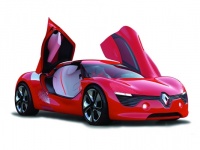Clean slate: design and production of electric vehicles
Car manufacturers are starting to capitalise on the design freedom offered by low-carbon electric vehicles .


However, some of Nissan’s concepts on the way to the Leaf made much greater use of by-wire technology, taking advantage of the system’s ability to decouple the power system and the motors from the driver. For example, the Pivo city car concept included a cabin that rotated, so the driver didn’t have to face backwards when reversing. Another concept vehicle uses hub-mounted electric motors - an increasingly common idea for electric vehicles - in an innovative way, allowing the wheels to rotate so that the vehicle slips into parking spaces sideways and changing the car’s centre of gravity when it corners.
Nissan decided against incorporating such radical changes into its first full-EV offering, but there is a feeling among industry observers that it’s been too conservative. Paul Niewenhuis noted that other hybrid and EV manufacturers, such as Toyota and GM, had deliberately gone for a more outlandish design. ’A few years ago, Honda tried to compete with the Toyota Prius with what was essentially a conventional Civic with a hybrid-electric powertrain, and the feeling was that they missed out because it didn’t look different enough. We think that people like driving a Prius because it looks different and it lets everyone know they’re driving a hybrid.’
Register now to continue reading
Thanks for visiting The Engineer. You’ve now reached your monthly limit of premium content. Register for free to unlock unlimited access to all of our premium content, as well as the latest technology news, industry opinion and special reports.
Benefits of registering
-
In-depth insights and coverage of key emerging trends
-
Unrestricted access to special reports throughout the year
-
Daily technology news delivered straight to your inbox










Water Sector Talent Exodus Could Cripple The Sector
Maybe if things are essential for the running of a country and we want to pay a fair price we should be running these utilities on a not for profit...